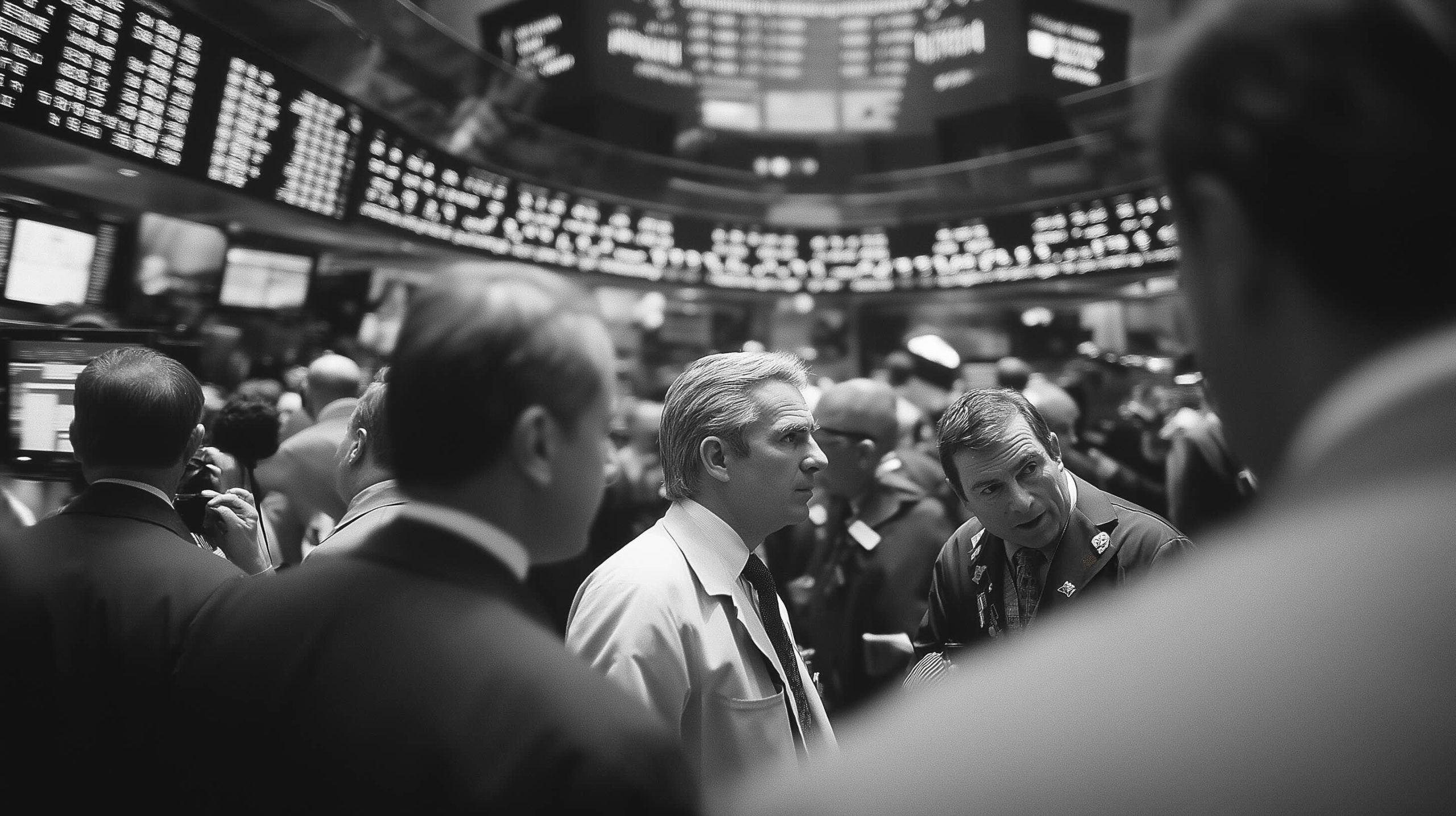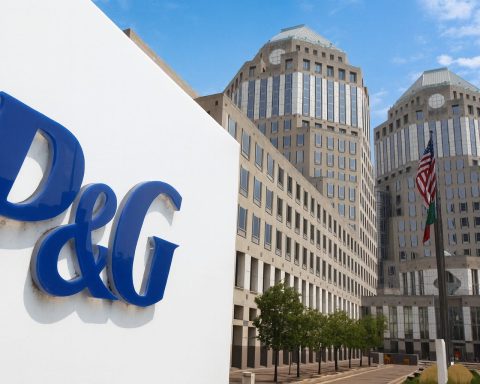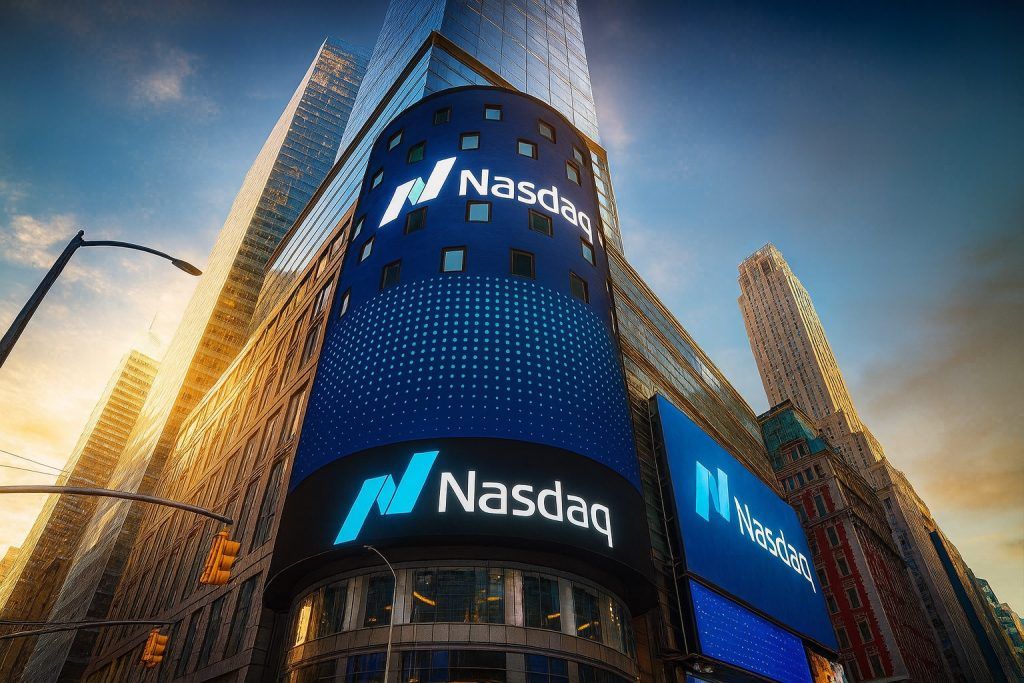- Relentless record highs: The U.S. stock market is on a historic tear. The S&P 500 and Nasdaq have surged to all-time highs, with the S&P up roughly 18% year-to-date (nearly 90% above its 2022 bear-market low) [1] [2]. In fact, both indexes have stayed above their 50-day moving averages for 112 straight trading days – the longest such bullish streak since 2011 [3] [4] – signaling extraordinary upward momentum.
- Powerful rally fuel: A perfect bullish cocktail of factors is driving the gains. The Federal Reserve’s pivot to interest-rate cuts in late 2025, strong corporate earnings, and euphoria around artificial intelligence (AI) have injected massive fuel into stocks. Big-tech shares tied to AI have skyrocketed (e.g. Nvidia +41% YTD, Oracle +73%, Palantir +143% [5]), propelling the tech-heavy Nasdaq upward. Lower rates and a cooling economy have also weakened bond yields and the dollar, providing a tailwind for equities. Even traditionally “safe” assets are climbing: gold blasted through $4,000/oz to record highs this month, an unusual parallel rally that reflects investors hedging risks even as they chase stock gains [6].
- Investors riding the wave: Market veterans note that investors have largely stopped fighting the rally and are instead piling in. The steady climb has offered few pullbacks, creating what one strategist calls a “lockout rally” – stocks “grind higher within a narrow channel”, and anyone waiting for a dip ends up “locked out” as prices keep rising [7] [8]. Many who were under-invested or skeptical have been forced to capitulate and buy at high levels rather than miss out. FOMO (fear of missing out) now outweighs fear of a correction for many investors, especially as the year-end approaches and sideline cash gets put to work in the booming market [9] [10].
- Burst of optimism – with a side of caution:Sentiment is bullish and the market has been shrugging off bad news. Even a U.S. government shutdown (now over a week long in October) barely dented confidence, with Wall Street treating it “like a rerun” of familiar political theater [11]. Dip-buyers leap in at any minor decline [12]. However, not everyone is sanguine – expert opinions are split on how long this can continue. History actually suggests such momentum tends to continue in the short term: after similarly lengthy uptrends, the S&P 500 has averaged about a +5% gain in the next 6 months [13]. Indeed, as the current bull market turns 3 years old this week (dating from the Oct 2022 low), some believe it “has more gas in its tank” [14]. Yet numerous voices warn that today’s valuations are stretched, especially in tech. The Bank of England cautioned that stock prices – “particularly for AI-focused tech” – look excessively high and could suffer a “sudden correction” if rosy growth assumptions falter [15]. As veteran portfolio manager Robert Pavlik put it, “It’s a wave, and waves don’t go on forever; it will eventually crest and decline.” [16]
- Playing it smart at market highs: Financial experts urge discipline amid the euphoria. Investing fundamentals still apply even in a hot market. Analysts advise focusing on quality fundamentals (buy stocks of companies with solid earnings/cash flow), diversifying across sectors (don’t bet everything on the hottest trend), and possibly averaging into positions rather than plowing in all at once [17]. Keeping some cash reserves is recommended so an investor can take advantage of volatility or any pullback [18]. Perhaps most importantly, think long-term – sticking to a plan and holding through ups and downs tends to beat panicky trading. As one investing column noted, chasing stocks at unsustainable valuations often ends badly when the tide turns, so staying grounded in fundamentals and patience is key to “keep your money safe” in a frothy market [19] [20].
A Historic Rally Defies Gravity
By all accounts, the stock market’s run in 2025 has been extraordinary. Major U.S. indexes continue to set record after record, seemingly without a breather. The S&P 500 and Nasdaq Composite have been climbing for months with remarkably low volatility. As of mid-October 2025, the S&P 500 is hovering near 6,750 – up roughly 18% year-to-date and almost 90% higher than its bear-market trough in October 2022 [21] [22]. The Nasdaq has seen similarly stunning gains, rising about 20% in 2025 and more than 80% from its 2022 lows.
Perhaps the most striking technical feat: the market hasn’t broken its uptrend in months. Both the S&P and Nasdaq have closed above their 50-day moving average every day since May – 112 trading days in a row through Oct. 9 [23]. Such a long stretch above this key trend line hasn’t been observed since 2011 [24]. The 50-day moving average is a widely followed indicator of the market’s short-term trend. Staying above it consistently is a sign of persistent upward momentum, and historically, when the market manages a streak of ~110+ days above the 50-day, it tends to keep rising in the months after. In fact, going back 35 years, similar streaks have led to an average +1.7% gain one month later and roughly +5.1% over the next six months for the S&P 500 [25]. So if history is a guide, the current rally could have a bit more room to run before any major trend change.
What’s driving this relentless rally? In short, a confluence of positive forces. Economic conditions and policy shifts have turned favorable for stocks. Most prominently, the Federal Reserve has eased off its inflation-fighting stance and begun cutting interest rates for the first time in years – a stark reversal from the rapid rate hikes of 2022–2024. The Fed delivered a quarter-point rate cut in late September, and investors overwhelmingly expect another cut by the Fed’s upcoming late-October meeting [26] [27]. Lower rates are like jet fuel for the stock market: they reduce borrowing costs for businesses, boost investment and growth prospects, and make bonds less attractive by comparison, thus driving more money into equities. “Don’t fight the Fed,” the old Wall Street adage goes – and in 2025 the Fed has flipped to being a friend of the bulls, rather than a foe [28].
Secondly, corporate earnings have remained solid. Despite some macro worries, U.S. companies on the whole delivered stronger-than-expected results in the first half of 2025. As the third-quarter earnings season kicks off, investors are watching to see if that strength continues. The market’s recent mild pullbacks have often coincided with caution ahead of earnings reports. “The earnings cycle is upon us and there’s a wait-and-see” regarding whether companies can keep growing profits at the same pace, noted Matthew Keator, a wealth manager in Massachusetts [29]. This week, for example, stocks paused their ascent for a day as traders took a breather to “consolidate” gains and brace for the wave of Q3 earnings releases [30]. Thus far, however, robust earnings (especially in certain sectors) have underpinned the market’s rise, giving investors confidence that high stock prices are justified by improving fundamentals.
Perhaps the biggest X-factor powering 2025’s rally is technology – specifically, the AI boom. A frenzy of excitement surrounds artificial intelligence and its transformative potential for businesses. This optimism has sent tech stocks soaring, adding trillions of dollars to market values. Mega-cap tech names dubbed the “Magnificent 7” led the early charge (companies like Apple, Microsoft, Google, Amazon, Meta, Nvidia, Tesla), but the rally has broadened beyond just these giants. High-growth chipmakers and software firms tied to AI have seen eye-popping gains. For example, Nvidia – a leader in AI processors – is up over 40% this year, Oracle +73%, Palantir (an AI and data analytics firm) up +143% year-to-date [31]. In one dramatic case, AMD’s stock jumped 24% in a single day after announcing a multi-billion dollar AI partnership with OpenAI [32]. These kinds of moves illustrate the frothy optimism around anything AI-related.
And it’s not just tech: as the rally marches on, it has broadened to other sectors as well. Recently, previously lagging groups like healthcare, industrials, and even utilities have joined the upswing, indicating the rally’s base is widening [33]. In early October, a surprise policy development (a White House deal on drug pricing) sparked a rotation into pharma and biotech stocks, lifting the S&P 500 healthcare index by ~2.7% in one day [34]. Major drugmakers like Eli Lilly and Biogen saw their shares soar ~9–11% overnight. Similar mini-rallies have occurred in travel stocks, industrial firms, and other areas – a healthy sign that market gains are not confined to one corner. Broader participation can make a rally more sustainable, since it’s not relying on just a few high-fliers.
Finally, there’s an interesting twist to this rally: safe-haven assets have climbed alongside risk assets. Most notably, gold prices have skyrocketed even as stocks hit records. Gold blasted above $4,000 per ounce for the first time ever in October, reaching about $4,078 at its peak on October 8 before settling near $3,975 by Oct. 10 [35]. That puts gold up over 50% year-to-date, dramatically outperforming even the red-hot stock indices [36]. This is highly unusual – typically, gold (a classic “fear hedge”) and stocks (risk assets) move opposite each other. But in 2025 they’ve been rallying in tandem, which “speaks to a bifurcated market psychology: optimism on innovation, but hedging against risk” as one analyst observed [37] [38]. Investors are effectively trying to have it both ways: chasing the upside in stocks and buying insurance via gold (and other havens) in case something goes wrong. Factors like global conflicts and a U.S. fiscal standoff have kept a bid under gold even as equities roar ahead [39] [40]. The result is an everything rally – stocks and gold, even bonds to some extent – fueled by abundant liquidity and the hope that Fed rate cuts will extend the good times for all asset classes.
Investors Chase the Rally – Fear of Missing Out Wins
Despite such strong performance, the rally hasn’t been a straight line for every investor. In fact, one notable feature of 2025’s market is how many investors were skeptical or underinvested until recently, and are now scrambling to catch up. The year began with plenty of wall-of-worry headlines – concerns about recession, inflation, and overvalued tech stocks. When an April market wobble hit (partly on some policy scares), quite a few market participants trimmed exposure, expecting a bigger correction. But that pullback in April was short-lived, and stocks quickly resumed climbing to new highs [41].
This left a sizable group of investors “off sides” – they had reduced stock holdings or hesitated to buy more, and suddenly found themselves trailing the market’s gains. As technical analyst Mark Arbeter explains, “there are still many investors who were caught off guard by the April selloff and have yet to return to their normal equity allocations, since this move higher has been wrought with fear that something’s not right.” [42] In other words, plenty of people didn’t quite trust the rally early on. They kept waiting for the other shoe to drop – but it hasn’t.
Instead, the market marched higher and volatility remained low, confounding the skeptics. Arbeter describes the dynamic as the stock market going through “volatility cycles”: lots of volatility at major turning points (tops or bottoms), but “within the middle of a bull market, stocks just grind higher within a very narrow bullish channel.” [43] That has certainly been the case in recent months – a slow, steady grind upward with near-imperceptible daily swings. For investors sitting on the sidelines, it’s been frustrating to watch.
Eventually, many have decided they can’t afford to wait any longer. The fear of missing the rally – FOMO – has overpowered the fear of a pullback. Arbeter calls these “lockout rallies”: when the market never really dips, it “locks out” those waiting to buy at lower prices [44]. As the year-end approaches, such sidelined investors are increasingly throwing in the towel and rushing back into stocks, effectively forced to buy at or near new highs [45]. This rush of latecomers provides additional fuel to the rally, creating something of a self-perpetuating cycle.
One investment director at AJ Bell summed it up nicely: “Investors who have held their nerve are cleaning up, yet the drums of worry are banging louder each day.” [46] Those who stayed fully invested through the early-year jitters are now sitting on sizable profits – “cleaning up” – while those who got spooked are anxious about how to get back in. Every day the market ticks higher increases the pressure (and worry) on underinvested folks, essentially forcing their hand.
It’s important to note that market sentiment is extremely optimistic, but not outright euphoric. Surveys and anecdotes suggest investors are bullish but still remember the sting of past downturns. There is an undercurrent of caution (“drums of worry”) even as indexes hit records. For example, in the fund flows data, there have been some paradoxical signals: the flagship S&P 500 ETF (SPY) actually saw record outflows of ~$32 billion in 2025, even while the index soared to all-time highs [47]. This implies some big institutional players took profits or rotated money elsewhere, even as retail traders and others continued buying. In essence, not everyone is all-in on this rally – but those who fought it earlier are begrudgingly joining now.
Another hallmark of the current market mood is complacency toward news that would normally be negative. Throughout the fall, traders have shrugged off potential bad news with surprising calm. Take the ongoing U.S. government shutdown: it’s now well into October with federal agencies partially closed, an event that in prior years might have rattled markets. Yet stocks barely blinked – the S&P 500 marched to new highs during the shutdown [48], and one strategist joked that investors are watching Washington’s budget drama “like a rerun” they’ve seen before [49]. Similarly, other headwinds like labor strikes or overseas conflicts (an Israel–Hamas war flared up, then reached a tentative ceasefire by Oct. 10) caused only brief stirs in specific sectors. By and large, the market’s attitude has been “no news is bad enough to derail this.” The psychology is almost TINA (“there is no alternative”) revisited – with interest rates now falling and cash yielding less, many feel they have little choice but to put money into stocks.
All of this paints a picture of a market where greed has the upper hand on fear, at least for now. The demand to be in stocks is high, and dips are viewed as opportunities. As one Wall Street adage goes, “markets take the stairs up and the elevator down.” In 2025, we’ve been riding the stairs up for an impressively long time – so long that more and more investors are concluding that staying off the ride is riskier than hanging on for dear life.
Why “Buy High” Is the New “Buy Low”
Conventional wisdom in investing says “buy low, sell high.” Yet in this unusual rally, some traders are doing the opposite – buying stocks at their highs – and finding success. It’s a strategy born of the momentum-driven market: what’s going up tends to keep going up. One prominent trader, Gianni Di Poce of TheoTrade, has openly advocated this approach. “Everyone tells you to ‘buy the dip.’ I do the opposite – I buy stocks hitting new all-time highs,” he wrote, noting that his recent track record backs it up [50].
It sounds counterintuitive (or even “crazy,” as Di Poce admits [51]), but there’s data behind the momentum strategy. “Here’s what nobody talks about,” he explains: if you had invested in the S&P 500 at new all-time highs (instead of waiting for pullbacks) consistently from 1988 to 2022, your returns beat buying at any other point [52]. After six months, those buy-high instances on average were ahead by over a full percentage point versus buying on random days; after one year the gap widened further; over 3-5 year periods, the buy-at-highs strategy “isn’t even close” – it handily outperformed buying dips [53]. In other words, historically strength begets strength more often than not. In a prolonged bull market, hesitation or waiting for a better entry can mean missing a lot of upside.
The logic comes down to momentum. When a stock (or index) is breaking out to new highs, it often signals that something is going very right for that company or the market. Institutional money tends to flow into these winners, not because big funds love paying higher prices, but because “momentum creates momentum,” as Di Poce puts it [54]. Success breeds optimism, which attracts more buyers – a virtuous cycle. For example, when Nvidia blew past its previous peak this year on the back of booming AI demand, that breakout was seen as extremely bullish not just for Nvidia but for the overall market [55]. It signaled that one of the market’s key bellwethers was exceeding expectations, which can lift sentiment broadly.
Traders employing this strategy emphasize risk management even as they buy high. Di Poce notes that he keeps position sizes small (never risking more than 10% of his portfolio on one stock), uses stop-loss orders (cutting losses if a stock falls ~8–10% from his entry), and aims for asymmetric rewards – targeting gains that are 3-4 times the size of his potential loss on each trade [56] [57]. This way, even if buying high sometimes backfires (which it will – no strategy is perfect), a few big winners can outweigh the losers. “Give it a 10% chance of a hundred times payoff… you should take that bet every time,” Di Poce quotes Jeff Bezos, highlighting the idea of asymmetric bets [58]. In practical terms, if 1 out of 10 trades is a huge 1000% winner and the other 9 are small 10% losses, you’d be far ahead overall.
The psychology behind buying highs is also interesting. It requires patience and discipline of a different sort. Instead of the patience to wait for a dip, it’s the patience to wait for a confirmed uptrend and not jump in too early. Then, paradoxically, it also requires the patience to take profits or cut losses methodically. “Patience is the holy grail of trading,” says Di Poce – patience to act only when the setup is right, and patience to admit when you’re wrong and move on [59]. Many investors lack the temperament to buy when a stock feels “expensive” or to sell when a trade goes south. Momentum traders train themselves to do exactly that.
Of course, buying at highs is not for everyone, and it can go horribly wrong in the late stages of a bubble. If you bought tech stocks at their peaks in early 2000 or crypto at the peak in late 2021, you suffered big losses when momentum suddenly reversed. The key is being able to identify true momentum vs. mania, and to manage downside risk. In today’s market, the momentum strategy has worked largely because the overall trend has been strongly up (a rising tide lifts most boats), and there have been clear fundamental drivers (earnings, Fed policy, AI growth) that justify the upward moves, rather than purely speculative hype.
Still, it’s a strategy best employed by experienced traders with clear rules. For long-term investors, the takeaway is that staying invested in a rising market – even adding at highs in a disciplined way – can often beat sitting in cash waiting for a pullback that never comes. As Di Poce concludes, “Stop waiting for the ‘perfect’ dip that may never come. Start looking at stocks breaking to new highs with real momentum behind them… The data doesn’t lie: buying strength outperforms buying weakness over time.” [60] [61] While everyone else tries to pick bottoms or catch falling knives, momentum investors ride the rockets – and in a year like 2025, those rockets have been plentiful.
How to Stay Safe When Markets Are Sky-High
For those feeling uneasy about the market’s lofty levels – which is a reasonable concern – experts have been circulating some sensible rules for navigating a hot market. A recent piece from Singapore’s The Smart Investor titled “Riding a Market High: 5 Rules to Keep Your Money Safe” offers guidance that applies anywhere in the world [62] [63]. The main idea: discipline and fundamentals become more important than ever when stock prices are soaring. Here are the five key rules:
- Focus on Fundamentals: Don’t get so caught up in the hype that you forget to ask, “Is this a good business at a fair price?” In a hot market, prices can run far ahead of actual company earnings or value. By concentrating on companies with strong earnings, cash flow, and manageable debt, you tilt the odds in your favor. Even if the market corrects, well-run businesses tend to recover and thrive over time. In short, invest in quality, not just whatever is going up today [64].
- Dollar-Cost Average (DCA): If you have money to put into the market, consider spreading out your purchases over time at regular intervals, instead of investing it all in one go at today’s high prices [65]. This technique, known as dollar-cost averaging, helps smooth out your entry price. If the market keeps rising, part of your money was invested earlier (at slightly lower prices); if the market dips, you’ll be able to buy some shares at cheaper prices with the later portions. DCA takes some timing risk off the table – a prudent approach when volatility could return.
- Diversify Across Sectors: One trap in a roaring bull market is putting all your money in the trendiest sector (for example, exclusively tech/AI stocks right now). That can juice gains on the way up, but it dramatically raises risk if that sector hits a snag. A better strategy is to spread investments across multiple sectors and asset classes [66]. Maybe you hold some tech growth stocks, some stable consumer goods or healthcare stocks, perhaps some international stocks or other assets. Diversification helps reduce the impact of a downturn in any one area, thereby lowering overall portfolio volatility. In 2025, for instance, while tech has led the way, other areas like finance and industrials have also done well – and some laggards could catch up. A balanced approach ensures you’re not over-exposed to a potential tech bubble.
- Conserve Some Cash: It’s tempting in a hot market to go “all in” – after all, cash sitting in the bank may feel like it’s missing out on big gains. But it’s wise to keep some cash reserves handy [67]. Why? Because markets do correct eventually, and when they do, cash gives you the flexibility to scoop up bargains. If you’re 100% invested with no liquidity, you might be forced to sell something (possibly at a bad time) to raise cash for an emergency or a new opportunity. By maintaining a cash cushion (or other safe, liquid holdings), you’ll be ready to take advantage if a sharp dip comes. As the saying goes, “cash is dry powder.” In 2025, an investor who kept some cash could rotate into stocks like energy or utilities when they dipped, for example, and boost future returns.
- Think Long-Term: Perhaps the most important rule is to maintain a long-term perspective [68]. Bull markets can make anyone feel like a genius, and bear markets can make the same people feel like fools. The reality is that wealth in the stock market is usually gained by staying invested through cycles and letting compound growth work its magic. Trying to jump in and out to time the market is very hard to do consistently. Instead, if you’ve picked good investments (rule #1) and diversified (rule #3), trust your strategy and give it time. Long-term investors who held on through past booms and busts have generally come out far ahead of those who traded on every twist and turn. As history shows, sharp corrections often follow periods of euphoria, and those who were overleveraged or swept up by FOMO tend to panic-sell at the worst time [69] [70]. By thinking long-term, you’re less likely to be one of them – and more likely to still be holding the winners that keep climbing over years, not just months.
In essence, prudent investing principles don’t change just because the market is soaring. In fact, they become even more crucial. Investors should ask themselves if they’re chasing a stock solely because it’s gone up, or because the underlying business justifies it. They should stress-test their portfolio – if the market dropped 20% tomorrow, would you be comfortable with your holdings? If not, a rebalancing might be in order. Remember that paper gains can disappear quickly if a speculative bubble pops. The late stages of a rally are when discipline often erodes – people start trading on greed, rumors, or headlines instead of fundamentals. Avoid that trap by sticking to a plan.
How Much Longer Can the Party Last?
This is the trillion-dollar question. No bull market lasts forever, but they can certainly go on longer than anyone expects. At nearly three years old, the current bull run (measured from the autumn 2022 lows) is already longer than average for post-WWII bull markets, yet not unprecedented. By comparison, the 2009–2020 bull market ran for 11 years, and the 1990s bull for nearly 10 years. So simply being 3 years old doesn’t doom this rally – in fact, by some measures, it’s still in middle age. As Reuters noted, even after a ~90% rise, “history suggests the current bull market has more gas in its tank.” [71] Low inflation (around 2-3% core), falling interest rates, and decent economic growth without a recession in sight all provide fundamental support that could extend the market’s gains.
That said, risks are piling up the higher we go. Valuations are a big concern. The S&P 500 is trading at a price-to-earnings ratio well above its long-term average. In particular, the AI-centric tech stocks carry extreme valuations – by some metrics, reminiscent of the dot-com bubble era [72]. As mentioned, the Bank of England’s stability report explicitly warned that equity valuations, “especially for AI-focused tech,” appear “stretched” and that a sudden sentiment shift could trigger a sharp correction [73]. Basically, stock prices are baking in a lot of future growth and good news. If that good news doesn’t materialize (say, a hot AI startup fails to live up to its hype, or a big company issues a disappointing forecast), we could see investors rush for the exits all at once.
Another potential trigger is the Federal Reserve’s tone. Right now, markets are assuming the Fed will keep cutting rates into 2026. But if inflation were to flare up again or if the Fed grows concerned that assets are overheating, they could slow or pause the rate cuts. Any hint of hawkishness (tightening) has the ability to spook this market, which has been soothed by the promise of easier money. Fed Chair Jerome Powell has tried to balance things by not over-promising on cuts – he’s indicated that while the Fed has started easing, they remain vigilant on inflation and won’t hesitate to adjust if needed [74] [75]. In plain terms, the Fed is walking a tightrope. A policy misstep or even a misunderstood comment could inject volatility.
Earnings and economic data form another wildcard. As the government shutdown delayed some data releases, the market hasn’t had to digest any bad news on jobs or inflation lately [76] [77]. But eventually, the data will come out. If inflation surprises to the upside, or growth suddenly falters, it could challenge the “Goldilocks” narrative (where the economy is not too hot, not too cold). For now, the U.S. economy has been resilient – no recession yet, unemployment still relatively low – which has given investors confidence. Yet, parts of the economy (like manufacturing or commercial real estate) show weakness, and global events (Europe’s energy situation, China’s property market woes, geopolitical conflicts) could have knock-on effects.
Some analysts also point to technical signs of an aging rally. For instance, while breadth improved recently, earlier in the year a handful of mega-cap stocks accounted for a disproportionate share of the S&P’s gains (hence the “Magnificent 7” chatter). If leadership narrows again or if trading volume on up-days dries up, it might indicate diminishing enthusiasm. Investor sentiment surveys have also swung bullish, which contrary thinkers view as a warning sign (when everyone is bullish, who’s left to buy?). Greed indexes and other sentiment measures show elevated optimism, though not extreme euphoria. This is a nuanced signal – it’s when euphoria goes off the charts that contrarians really worry. We may not be there yet, but the trend is something to watch.
In the end, predicting the exact top is a fool’s errand. Markets can remain irrational longer than you can stay solvent, as the saying goes. What we can do is outline scenarios:
- In a bull case scenario, the Fed’s rate cuts engineer a “soft landing” – inflation stays subdued, the economy grows moderately, and corporate profits rise steadily. Under that scenario, stocks could indeed have more upside, perhaps gradually climbing further into 2026. If AI and other innovations continue to drive productivity, we might even see the “bubble” transform into actual economic growth that justifies high valuations (a less common outcome, but not impossible).
- In a bear case scenario, something finally snaps: maybe inflation reignites or the Fed realizes it eased too much, or an unforeseen shock hits (for example, a major default, a geopolitical escalation, etc.). In such a case, today’s complacency could quickly turn to panic. A 10-20% correction would bring valuations back to earth, and arguably could be healthy. It’s worth remembering that the S&P 500 hasn’t even had a 10% correction since mid-2024 – over a year now. Some would say we’re overdue for a shake-out of the “weak hands.” A sharp correction isn’t inevitable, but it’s always a risk in the background.
- There’s also a middle scenario: the market might simply flatten out or see more range-bound trading going into next year. Stocks don’t have to crash; they could just digest gains for a while. This happened in mid-2021, for example, when a strong rally was followed by several months of choppy, sideways movement as earnings caught up to valuations. With the S&P 500 at historic highs, even moving sideways for a few quarters while profits grow could be a good outcome, helping reduce the price-to-earnings froth without severe pain.
For now, investors are mostly enjoying the ride – and who can blame them? The market “keeps on giving,” and few want to be the one to shout fire in a crowded theater while the party music is playing. But it’s wise to keep a bit of healthy skepticism. As one market commentator quipped, “the higher stocks climb, the harder they might fall if sentiment turns.” [78] Or as Robert Pavlik cautioned, waves eventually crest [79]. The exact timing of that crest is uncertain, but it will come eventually, and likely faster than investors expect.
Bottom line: The 2025 stock rally has been remarkable, underpinned by real positives like Fed easing and tech-driven growth, but it is not invincible. Investors should remain vigilant even amid the exuberance. Riding a bull market can build wealth, so long as you manage your risks and emotions. As of today, the bulls are firmly in control and the trend is your friend – but prudence and preparedness will ensure that whenever the tide does turn, you won’t be caught off guard. Enjoy the good times, but don’t “question a good thing” so much that you miss it entirely… and equally, don’t assume the good times will roll on indefinitely without any bumps in the road. [80] [81]
Ultimately, staying informed, diversified, and disciplined is the best way to navigate this record-breaking rally – wherever it heads next.
Sources: MarketWatch [82] [83]; Yahoo Finance/The Smart Investor [84] [85]; TheoTrade via TalkMarkets [86] [87]; Reuters [88] [89]; Tech Space 2.0 (TS2) News [90] [91].
References
1. www.reuters.com, 2. www.reuters.com, 3. www.fastbull.com, 4. www.fastbull.com, 5. ts2.tech, 6. ts2.tech, 7. www.fastbull.com, 8. www.fastbull.com, 9. www.fastbull.com, 10. www.fastbull.com, 11. ts2.tech, 12. ts2.tech, 13. www.fastbull.com, 14. www.reuters.com, 15. ts2.tech, 16. ts2.tech, 17. thesmartinvestor.com.sg, 18. thesmartinvestor.com.sg, 19. thesmartinvestor.com.sg, 20. thesmartinvestor.com.sg, 21. www.reuters.com, 22. www.reuters.com, 23. www.fastbull.com, 24. www.fastbull.com, 25. www.fastbull.com, 26. ts2.tech, 27. www.reuters.com, 28. ts2.tech, 29. www.reuters.com, 30. www.reuters.com, 31. ts2.tech, 32. ts2.tech, 33. ts2.tech, 34. ts2.tech, 35. ts2.tech, 36. ts2.tech, 37. ts2.tech, 38. ts2.tech, 39. ts2.tech, 40. ts2.tech, 41. www.fastbull.com, 42. www.fastbull.com, 43. www.fastbull.com, 44. www.fastbull.com, 45. www.fastbull.com, 46. ts2.tech, 47. finviz.com, 48. ts2.tech, 49. ts2.tech, 50. talkmarkets.com, 51. talkmarkets.com, 52. talkmarkets.com, 53. talkmarkets.com, 54. talkmarkets.com, 55. talkmarkets.com, 56. talkmarkets.com, 57. talkmarkets.com, 58. talkmarkets.com, 59. talkmarkets.com, 60. talkmarkets.com, 61. talkmarkets.com, 62. thesmartinvestor.com.sg, 63. thesmartinvestor.com.sg, 64. thesmartinvestor.com.sg, 65. thesmartinvestor.com.sg, 66. thesmartinvestor.com.sg, 67. thesmartinvestor.com.sg, 68. thesmartinvestor.com.sg, 69. thesmartinvestor.com.sg, 70. thesmartinvestor.com.sg, 71. www.reuters.com, 72. ts2.tech, 73. ts2.tech, 74. ts2.tech, 75. ts2.tech, 76. ts2.tech, 77. ts2.tech, 78. ts2.tech, 79. ts2.tech, 80. www.fastbull.com, 81. ts2.tech, 82. www.fastbull.com, 83. www.fastbull.com, 84. thesmartinvestor.com.sg, 85. thesmartinvestor.com.sg, 86. talkmarkets.com, 87. talkmarkets.com, 88. www.reuters.com, 89. www.reuters.com, 90. ts2.tech, 91. ts2.tech







